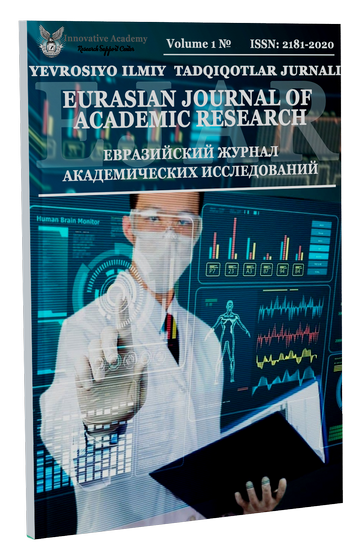CREATION OF A NEW MODEL OF BURNS IN RATS WITH THE DETERMINATION OF THEIR DEGREE AND THE USE OF CARBOXYMETHYLCHITOSAN APIS MELLIFERA
Main Article Content
Аннотация:
The article provides information about thermal skin burns and emerging pathophysiological changes in integumentary tissues. The aim of studying and treat these severe processes, burn the skin of animals. A new model of thermal skin injury in rats has been created. For the occurrence of a skin burn, a soldering gun with a flat rod PP REXANT ZD-715 12-0188 with a tip heating temperature of up to 400 0C was used. The degree of the burn was determined by histological examination of skin tissues under a microscope, which was grade IIIA and IIIB. Positive results of using an ointment based on carboxymethylchitosan (CMHZ) have been recorded.
Article Details
Как цитировать:
Библиографические ссылки:
Ashburn MA. Burn pain: The management of procedure-related pain. The Journal of Burn Care & Rehabilitation. 1995;16(3 Pt 2):365-371
Brigham PA, McLoughlin E (1996) Burn incidence and medical care use in the United States: estimates, trends, and data sources. 17(2). Р.95–107
Summer GJ, Puntillo KA, Miaskowski C, Green PG, Levine JD. Burn injury pain: The continuing challenge. The Journal of Pain.
;8(7):533-548. DOI: 10.1016/j.jpain.2007.02.426
Horton JW. Left ventricular contractile dysfunction is a complication of thermal injury. Shock. 2004;22(6):495-507. DOI: 10.1097/01.shk.0000145205.51682.c3
Asko-Seljavaara S. Burn research--animal experiments. Acta Physiologica Scandinavica. Supplementum. 1986;554:209-213
Abdullahi A, Amini-Nik S, Jeschke M. Animal models in burn research. Cellular and Molecular Life Sciences. 2014. 71(17):3241-3255. DOI: 10.1007/s00018-014-1612-5
Andrews CJ, Kempf M, Kimble R, et al. Development of a consistent and reproducible porcine scald burn model. PLoS One. 2016.11(9):e0162888. DOI: 10.1371/journal.pone.0162888
Dahiya P. Burns as a model of SIRS. Frontiers in Bioscience. 2009.14.4962-4967. DOI: 10.2741/3580
Bernard C. An Introduction to the Study of Experimental Medicine. New York: Dover Publications Inc; 1957. p. 272
Pfurtscheller K, Petnehazy T, Goessler W, et al. Innovative scald burn model and long- term dressing protector for studies in rats. Journal of Trauma and Acute Care Surgery. 2013. 74(3):932-935. DOI: 10.1097/TA.0b013e31827d0fc3
Campelo APBS, Campelo MWS, de Castro Britto GA, et al. An optimized animal model for partial and total skin thickness burns studies.
Acta Cirъrgica Brasileira. 2011;26(1):38-42. DOI: 10.1590/S0102-86502011000700008
Motamed S, Taghiabadi E, Molaei H, et al. Cell-based skin substitutes accelerate the regeneration of extensive burn wounds in rats. American Journal of Surgery. 2017. 214(4):762-769. DOI: 10.1016/j.amjsurg.2017.04.010
Wang CH, Chang SJ, Tzeng YS, et al. Enhanced wound-healing performance of a photo- polysaccharide-enriched dressing—A preclinical small and large animal study. International Wound Journal. 2017. Р.1359-1369. DOI: 10.1111/iwj.12813
Под ред. проф. С.В.Андреева Моделирование заболеваний. Медицина", М. 1973г. 423с.
Моновцов И.А. и др. Способ моделирования ожоговой травмы в эксперименте у животных. RU2001127406/14A. 2003-08-10


